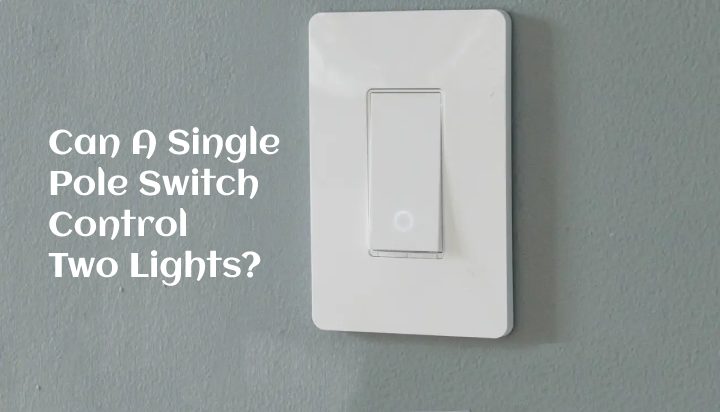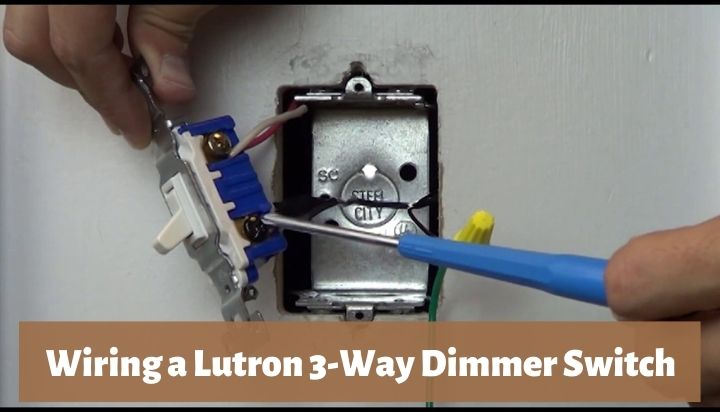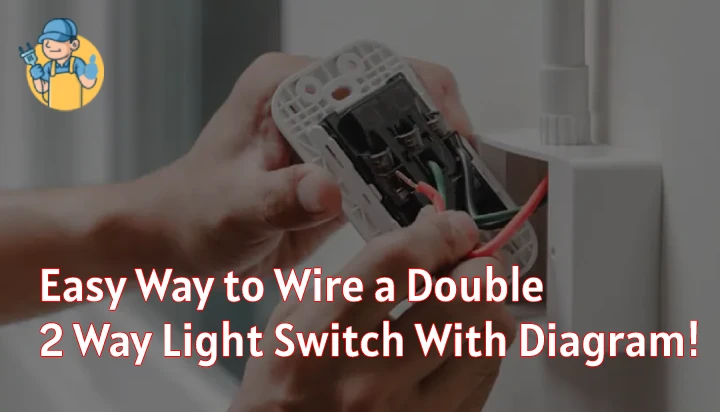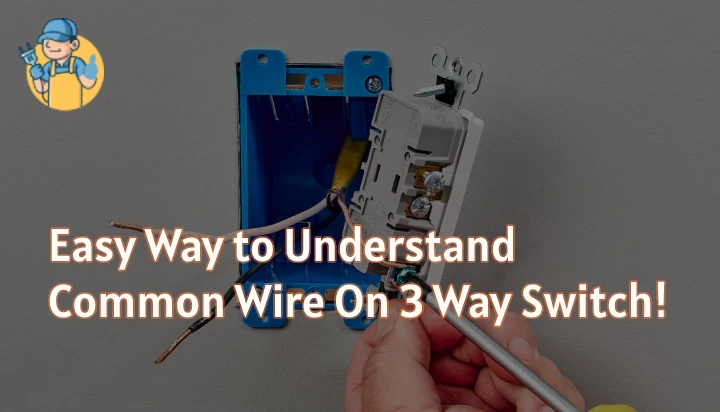Out of curiosity, I’ve been thinking if it’s possible to use 2 bulbs using a single pole switch and eventually get the answer through the experiment.
So, can a single pole switch control two lights?
Yes, the single pole switch can control 2 bulbs if you connect them properly by following the basic procedure.
In this guide, I’ll explain the process in detail and discuss some related topics. Keep on reading till the end!

Single Pole Switch Can Control Two Lights In These Cases!
One switch controlling two lights separately is possible. But, when it comes to the single pole switch, this can be a little complicated. You can do it easily if using fluorescent bulbs (or similar type lights) and a 3-pin switch.
Also, you need to consider the location and wire length. If you have an existing location where it contains both a single pole switch and 2 lights, then this won’t require any serious effort.
Plus, bring long white (neutral) and black (hot) wires to attach to the bulbs, switch, and power source. Other than this factor, there are 2 things that need to be considered. These include –
- Both bulbs are “paralleled”.
- The switch needs to be SPDT (Single Pole Double Throw) that can handle the 2 bulbs if turning the switch on or not.
Using the SPDT switch might give 2 kinds of situations that you can’t avoid. Let me share them in detail –
- When the SPDT switch’s S is thrown to 1 (ON position), the L1 light will illuminate but the L2 light would stay in the off position.
- When the SPDT switch’s S is set to 2 (OFF position), the L2 light will beam up but the L1 light won’t.
Know that the bulbs inserted on the SDPT switch can create some errors like fluorescent light flickering issues if you haven’t wired it correctly.
Learn To Control 2 Lights In A Single Pole Switch
Controlling 2 lights in the single pole switch is easy if you just use fluorescent bulbs and a 3-pin switch with a trigger system. Here’s the procedure for how to do it yourself:
- Go to the location where you are wanting to add the 2 bulbs with a single switch.
- Get a couple of long wires (white for the neutral phase and black for the hot phase).
- Turn off the power supply to the room as the existing switch location has the power source.
- Remove the switch from its outlet box by taking out the screws (if it contains any).
- Insert the white (neutral) wire through the hole so that it’s one side goes to the L1 (first) socket terminal and another goes to the L2 (second) socket terminal.
- Be sure to connect both wires with another white wire by twisting them to make one. Cover the open surface of the twisted part in a wire tube.
- Move the white wire (another side) through the hole so that it goes directly into the power source area. Then, insert it with the white wire of the power source and connect them by twisting. Secure the open surface in a wire tube.
- Place the black wire on the top pin of the switch and secure it in the screw. Move the long black wire so that it goes to the lighting areas.
- Get 2 black wires and place one wire on the L1 socket terminal and another wire on the L2 socket terminal. Be sure to tighten out the screw. Connect both black wires to make one connection.
- Connect the black wire of the switch to the L1 and L2 sockets black wire to make one connection. Secure the open wire of the twisted one in a wire tube.
- Check the black wire of the switch at the bottom pin that should connect directly to the power source.
- The ground wire is automatically connected to the switch and power source. Bring 2 ground wires to connect to the L1 and L2 socket ground areas.
- Pull the ground wire of the power source and connect it to the L1 and L2 ground wires. Secure the surface in a wire tube.
- Adjust the socket to go inside the box. Reinsert the screws with the screwdriver on both sockets.
- Reinstall the switch in its outlet box.
- Install the 2 bulbs (fluorescent type) on 2 sockets.
- Turn on the power supply and then switch on the light to test it out.
- If the 2 bulbs aren’t lightening up, then learn why the fluorescent light not working.
The Number of Lights That A Single Pole Switch Can Control
It depends on the characteristic and rating of the single pole switch! As all switches are rated based on how much current they can safely carry and interrupt, the answer can differ.
If you increase the number of bulbs in the single pole switch, then the power each bulb will drag can reach the limit easily.
To understand it better, suppose you have 100 watts of light that draws 1 amp. You can add up to 15 lights since most light switches including single pole are rated for 15 amps.
But the right practice for electrical connection and avoiding reaching the limit, one should add not more than 10 bulbs per circuit. That means you can add 10 bulbs safely in 100 watts of light!
Overall Thoughts
Learning how can a single pole switch control two lights is not that hard if you do it carefully.
However, if it seems tough or unclear, then get help from an expert electrician. You might need to pay some bucks for that. But if this is too out of your zone, I suggest going for the route, nevertheless.
If you like this guide and find it helpful, then perhaps you can also get help on checking if a ballast is bad! I will be back with similar guides soon, till then stay tuned!


![Eaton 4-Way Switch Wiring With Diagram [Complete Guide]](https://wiringsolver.com/wp-content/uploads/2022/10/Wiring-Diagram-with-Instructions-for-an-Eaton-4-Way-Switch.jpg)
![How To Wire A 240v Double Pole Switch? [Explained]](https://wiringsolver.com/wp-content/uploads/2022/09/Wiring-a-240V-Double-Pole-Switch.jpg)
![Wiring a Combination Switch with 2 Wires! [Full Guide]](https://wiringsolver.com/wp-content/uploads/2022/10/Wiring-a-Combination-Switch-with-2-Wires.jpg)

